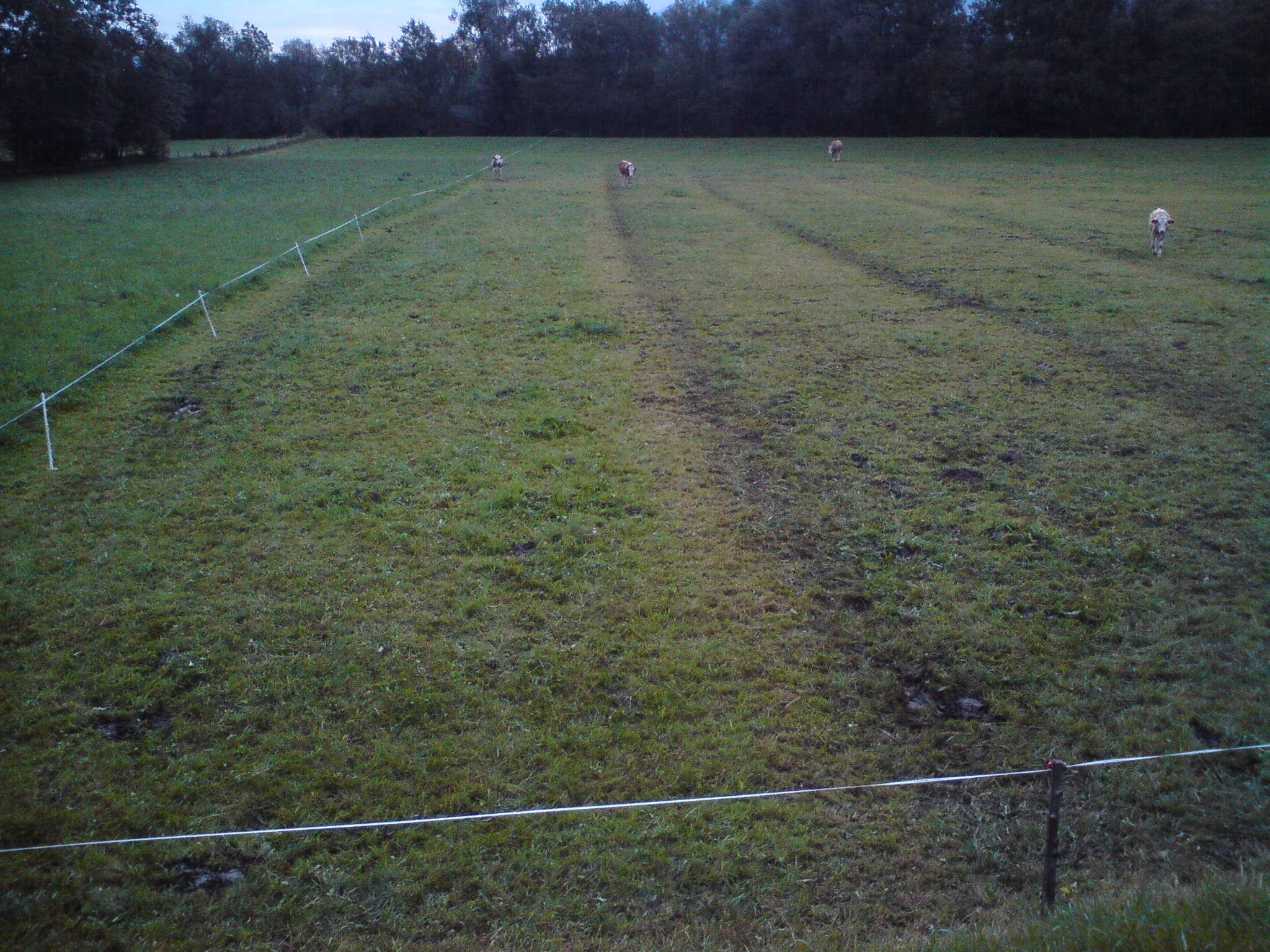Autumn grazing is a widespread use of the last growth of grassland in many regions. To ensure that the grazed grassland areas deliver good yields and qualities the following year, there are a few rules that must be followed.
Especially in autumn, when the cows and young cattle come from the alpine pastures to the meadows after the last cut, the plants and the ground are moist due to the formation of dew at night. This makes the soil deformable under load and susceptible to compaction. In addition, cut meadows have a much less dense turf than permanent pastures. The meadow bluegrass is very important on permanent pastures because it builds up a very dense population with its runners. This stable scar is missing on the grazed cut surfaces and thus presents an additional problem area.
Particular attention must be paid to the plant population, as autumn grazing does not take place on a permanent pasture area but on a cutting meadow. These mainly contain grasses with clump-shaped growth (such as cocksfoot, meadow fescue, smooth oats, etc.). These grasses store reserve substances primarily in the base of the stalk. For this reason, the optimal cutting height is 5-7 cm, as this means that the reserve material stores of the clump grass remain on the plant and the plant can more easily sprout again. This fact must also be taken into account when grazing in the fall. The meadow should also go into winter at 5-7 cm (fist-high). If the animals bite the clump grasses too deeply, the entire plant is severely weakened. This means that the plants go into the winter weakened and have hardly any reserve materials available. This can lead to delayed sprouting in spring and, in the worst case, to the death of valuable forage grasses. Gaps in the meadow that are caused by dead or weakened forage grasses and scar damage provide space for the development of undesirable plants in the following year (e.g. dock, chervil, common panicle, etc.).
To ensure that no damage is caused to the meadow sward and the soil, the grazing animals must be distributed as evenly as possible over a larger area. Standing pasture is therefore an optimal pasture system for autumn pasture. The often widespread portion pasture is difficult to handle, especially in autumn, and is therefore not recommended. After the daily push onto the area, the herd moves straight towards the fresh strip and graze it. This results in a high load on the area. Damage to the scar and the floor can easily occur in this area. Another factor is that the animals usually create a path to the portioned strips and damage to the soil compaction occurs in this area. Since these trails usually have no vegetation, the animals pick up soil with their claws and distribute it on the food. These contaminated areas are usually avoided or can cause diarrhea if consumed.
If the special requirements for autumn grazing are observed, this form of grassland use is a good and sensible measure for the meadow and the animals.

Damage to the turf caused by portion grazing in autumn
Damage to the turf caused by portion grazing in autumn




